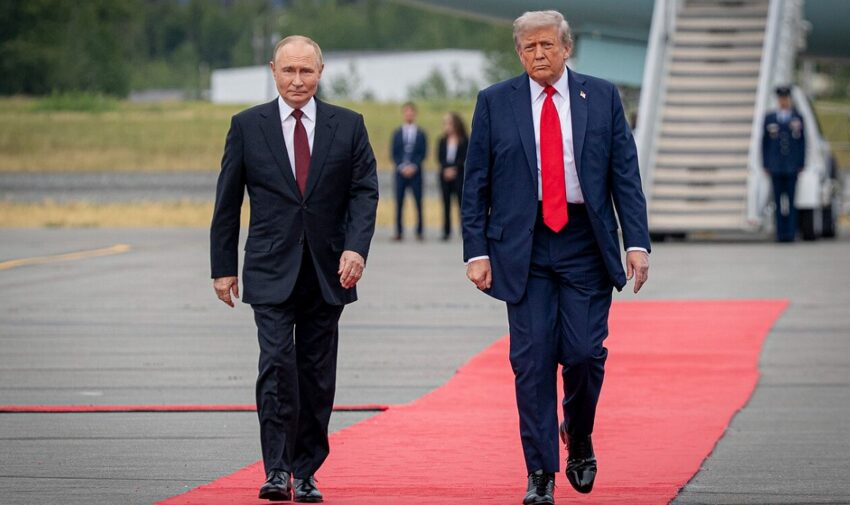Even though the mainstream media have largely been spitting venom: the summit between Kremlin leader Putin and US President Trump in Anchorage has shifted the balance in favor of the Kremlin. While Moscow views the event as a diplomatic success, Ukraine and its European backers find themselves under increasing pressure.
Putin skillfully used Friday’s meeting to advance his strategic goals in Ukraine and avoid making any concessions. Instead of negotiating a ceasefire or truce, as demanded by Trump, the Europeans, and Kiev, the Kremlin chief insisted that the root causes of the conflict must first be addressed. These include, among other things, a binding renunciation of Ukraine’s NATO membership, the protection of the Russian-speaking population in the neighboring country, and an end to Western military aid to Kiev.
The Zelensky government, on the other hand, insists that hostilities cease first. Such a move is unacceptable to the Kremlin, evidently for reasons of military logic. As the deputy head of the Russian Security Council, former Russian President Dmitry Medvedev, emphasized on Telegram, “fighting and negotiations in parallel” are quite possible. The Kremlin is thus signaling that the Russian side will continue hostilities until further notice and actually has little interest in a peace agreement with Kiev. For Ukraine, this means that its negotiating position continues to deteriorate with each passing day, even though Kiev has recently intensified its drone war against targets deep in the Russian hinterland.
Although Zelensky was briefed by Trump by phone after the summit in Anchorage, his subsequent visit to the White House on Monday – this time not in the controversial “combat sweater,” but at least in a something resembling a jacket – again seemed like a humiliation. Zelensky was accompanied by a high-ranking NATO and EU delegation for safety’s sake, presumably to avoid a scandal like the one in February, when he was scolded in front of the press. Nevertheless, he again called for tougher sanctions against Russia and a three-way summit with Putin – a demand that seems even more unrealistic after the meeting in Alaska.
Putin, on the other hand, was received by Trump on Friday with full diplomatic honors, including a red carpet and many gestures of cordial understanding.
The US president’s endorsement of the Russian position that a ceasefire was not a prerequisite for peace talks has fueled the worst fears, especially in Europe. Nevertheless, the EU and NATO allies are trying to compensate for their diminishing importance in the negotiations. In a joint statement by top EU politicians, including Commission President Ursula von der Leyen and Council President António Costa, they insisted on security guarantees for Ukraine. However, concrete proposals were lacking and most notably, the mantra-like demand for an immediate ceasefire was dropped.
It’s also gradually becoming clear in Brussels and Berlin that Europe is now sitting at the kids’ table in the power games between the major powers. While Putin has been able to gain a lot of strategic ground after years of Western sanctions, Kiev and the EU are on the defensive.
Decisions are being without their input while the big players solve problems in their own way.
The post EU: Sitting at the Kids’ Table appeared first on Free West Media.
Click this link for the original source of this article.
Author: Dan Roodt
This content is courtesy of, and owned and copyrighted by, http://freewestmedia.com and its author. This content is made available by use of the public RSS feed offered by the host site and is used for educational purposes only. If you are the author or represent the host site and would like this content removed now and in the future, please contact USSANews.com using the email address in the Contact page found in the website menu.





